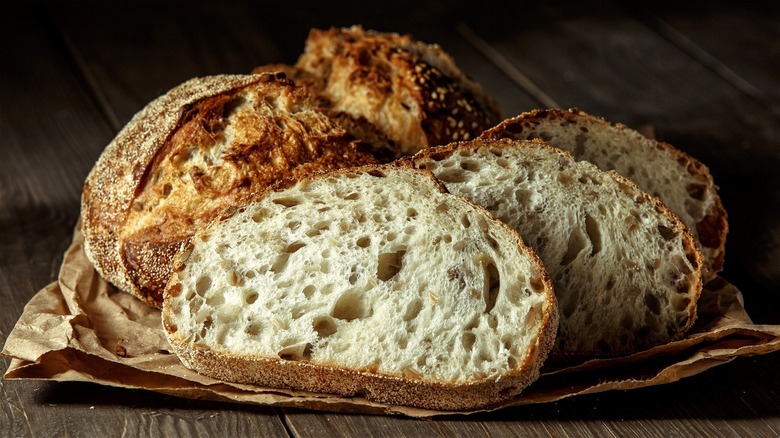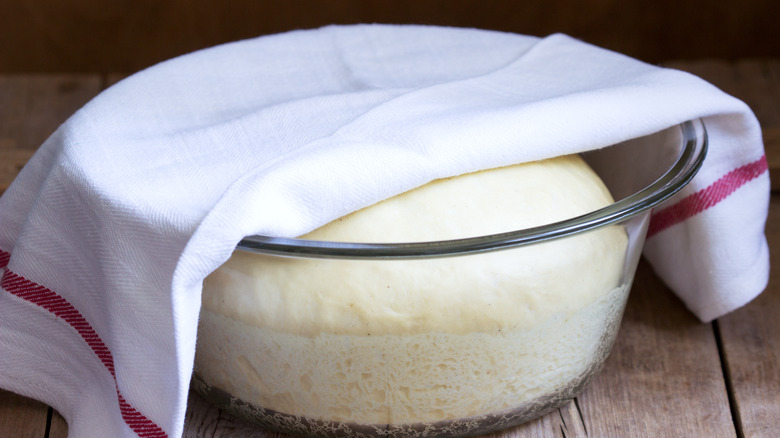The Poke Test To Tell If Your Sourdough Is Overproofed
During the pandemic, people suddenly found themselves with an abundance of time, leaving many a bit bored. This is fertile ground for exploring the interests you moved into the "someday" column. And with yeast pretty much flying off shelves, it's no surprise that some ambitious home bakers tried their hand at baking sourdough bread.
Nurturing a sourdough starter is like having a pet — it needs to be fed and watered — so it was the perfect hobby to take up to while away the hours during the lockdown. This shift to making bread turned our Instagram feeds into bakery windows, full of gorgeous, crusty loaves of sourdough bread instead of artful restaurant meals or iconic travel destinations (per The Economist).
However, it's a notoriously intimidating hobby to get into where so much can go wrong, from trying to revive a neglected starter to starters that aren't vigorous enough. Seeing everyone's successes on Instagram can give you a sense of not wanting to try for fear of not stacking up. But something that holds true across baking any yeasted product is over- or under-proofed dough, both of which take practice and experience to recognize. Enter the poke test.
Over-proofed dough is salvageable
Over-proofed dough is dough that's proofed longer than necessary. It's over-fermented, and while the yeast in your dough does produce the carbon dioxide needed to rise your dough, it has a limit. You still want enough yeast alive in your dough to give you a lift in the oven, otherwise, your bread will bake flat, pale, and dense. Over-proofing dough often happens during the second proof after shaping the loaf — perhaps your kitchen was too warm, or you got distracted — but it can happen during bulk fermentation.
You can perform a simple poke test to determine the state of your dough. Artisanal baker Apollonia Poilâne says you should be looking for dough that has some spring and feels "resilient" when you touch it. Your bread shouldn't deflate when you poke it. According to The Perfect Loaf, an under-proofed dough will spring back quickly when gently poked, while an over-proofed dough never springs back. Dough that's ready for the oven will be a mix of the other two and it will spring back slowly, but won't fill back in all the way.
Don't fret if your dough is over-proofed — it is salvageable. You can reshape the dough and hope for the best, or shape it into a flatbread and bake it. Poilâne also suggests using the dough to make crackers or pancakes. Breadcrumbs, homemade croutons, and French toast are also great options for using up your over-proofed dough.

